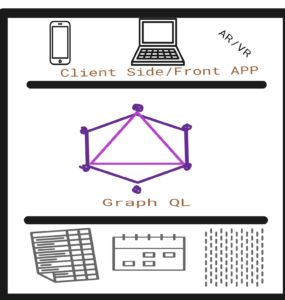GraphQL is an open-source query language for APIs that was developed by Facebook. It is designed to be a more efficient and flexible alternative to REST APIs.
Here are some key points to note about GraphQL:
- GraphQL allows clients to specify exactly what data they need and returns only that data, reducing the amount of data transferred over the network.
- It allows developers to create a single endpoint that can handle complex queries, reducing the number of requests required to fetch data from the server.
- With GraphQL, clients can specify the shape of the data they want to receive, allowing for more efficient caching and reducing the amount of redundant data fetched from the server.
- GraphQL is strongly typed, meaning that the types of data that can be returned from a query are explicitly defined in a schema.
- It supports real-time updates through subscriptions, allowing clients to receive updates as soon as the data changes on the server.
- GraphQL is language-agnostic, meaning that it can be used with any programming language.
- It has a rich tooling ecosystem, with many tools available for schema generation, testing, and documentation.
- While GraphQL can be more complex to implement than REST, it offers significant benefits in terms of efficiency and flexibility, making it an attractive option for many modern applications.
In summary, GraphQL is a powerful and flexible API technology that offers many advantages over traditional REST APIs. By allowing clients to specify exactly what data they need and reducing the amount of data transferred over the network, GraphQL can significantly improve the performance and efficiency of modern applications.
